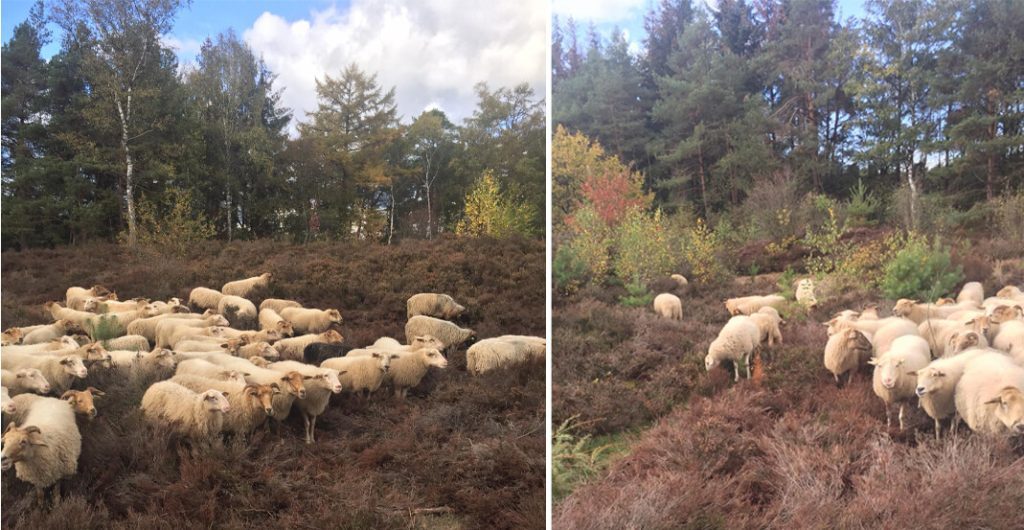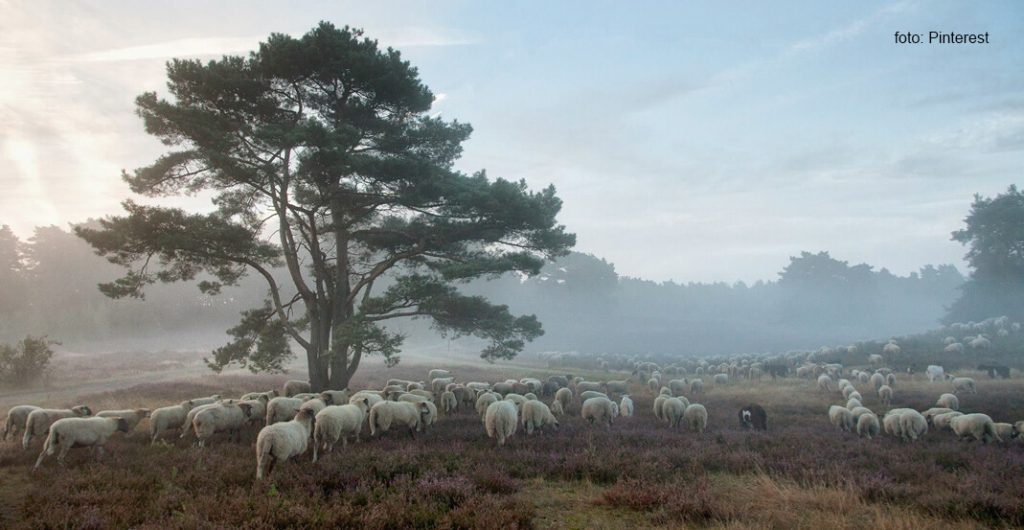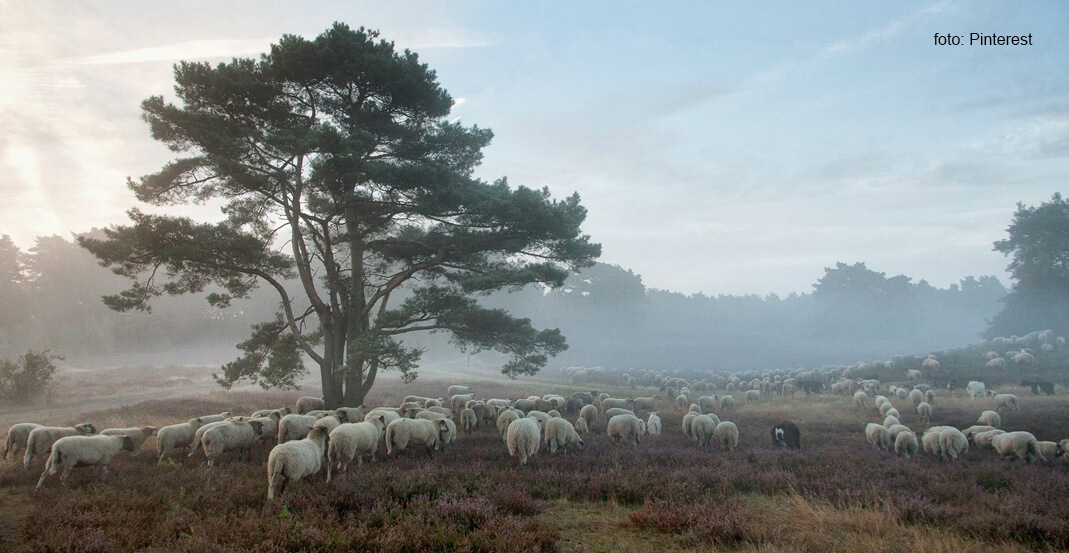Nature grazing
Natural grazing, a sustainable and eco-friendly practice, involves allowing a flock of sheep to graze in nature reserves. This method serves as an alternative to damaging nature through practices like mowing, sodding, and fertilizing. Sheep can access areas that are less reachable by machines or humans. Commonly utilized in heathlands, forest edges, and less fertile nature reserves.

A shepherd-guided flock of sheep can graze in targeted areas, a distinction from freely roaming cattle, horses, or deer. High nitrogen levels in certain natural areas promote dense growth of nitrogen-rich plants, which sheep prefer to graze on. This allows heather, herbs, and delicate plants to thrive and reproduce, preventing grass encroachment and forestation while promoting biodiversity.
Healthy balance
Sheep till the soil with their small hooves, which is then fertilized by their dung. Additionally, they aid in enhancing biodiversity by transporting spores, seeds, and insects in their wool from one area to another. In this dual role, sheep actively and passively foster a richer natural environment and maintain a healthy ecological balance.
Click here to read more about Dutch sheepwool.


